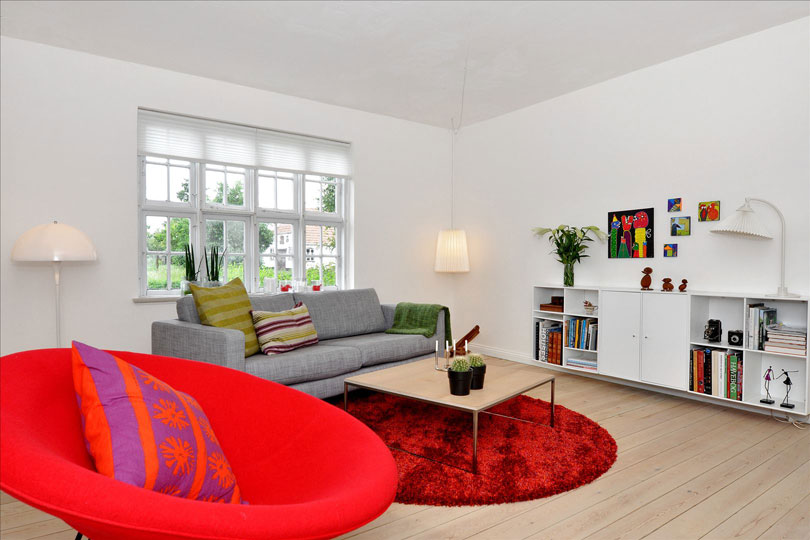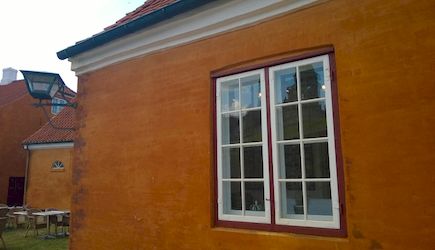Wallpaint
The environmentally friendly wall paint TEMPERA BASIS
colourful wallpaper, colourful wall colours in all shades and various coatings to spruce up furniture. The selection in hardware stores seems to be unbelievably large. Unfortunately, the use of these materials result in the release of thousands of tons of solvents into the environment per year when dealing with brushes and sprays. Volatile substances and other harmful substances can evaporate over a longer period in the air and cause, for example, allergic skin reactions, even fatigue and headaches. There are also hundreds of other chemicals in these other products. Their effects on the environment and our own personal health are often not even known to the most skilled professionals. (Source: Federal Environment Agency brochure: healthy and environmentally friendly renovation Page 2, 2012)
Tempera paint was used for centuries in all households. This colour brings with it all the characteristics a good paint needs. If you are in search of a breathable paint which can be well tolerated, Tempera paint is a good choice..
Characteristics
The linseed oil strengthens the glue-bound distemper making it easy to remove any spots or blemishes with a damp lint-free cloth. It also makes it unnecessary to wash the glue-bound distemper before adding a new coat of paint. Tempera paint is incredibly productive. Diluted with water, it creates 1L tempera paint to cover an area of 15sqm. It covers well, smells good and is also very durable. Depending on the surface in question, it may require 1-2 coats.
 The oil is dispersed through the emulsion with the glue-bound distemper into many small droplets and thereby significantly shortening the drying times. The water content in the paint evaporates relatively quickly and the surface can be painted a second time over after half an hour to a maximum of two hours after the first coat. Here, the percentage of oil needs longer to cure, but this process is less visible. Unlike a pure linseed oil paint, a tempera paint, if incorrectly applied cause the surface to form wrinkles or even tear. Linseed oil increases in volume during the drying or curing. Applying linseed oil colours on too thick may result in wrinkles of the surface and prevent the oxidation process from taking place in the lower layers. The lower layer remains soft as it is unable to dry. In Tempera paints the linseed portion expands as well, but, in this case, it takes the place that the evaporated molecules have left behind. Tempera paints can be diluted with water or oil.
The oil is dispersed through the emulsion with the glue-bound distemper into many small droplets and thereby significantly shortening the drying times. The water content in the paint evaporates relatively quickly and the surface can be painted a second time over after half an hour to a maximum of two hours after the first coat. Here, the percentage of oil needs longer to cure, but this process is less visible. Unlike a pure linseed oil paint, a tempera paint, if incorrectly applied cause the surface to form wrinkles or even tear. Linseed oil increases in volume during the drying or curing. Applying linseed oil colours on too thick may result in wrinkles of the surface and prevent the oxidation process from taking place in the lower layers. The lower layer remains soft as it is unable to dry. In Tempera paints the linseed portion expands as well, but, in this case, it takes the place that the evaporated molecules have left behind. Tempera paints can be diluted with water or oil.
Tempera and their ingredients
The term is Latin Tempera origin and means "mix". Today the term emulsion paint is more commonly use to describe the traditional “tempera paints.” Emulsion paints can be found in many colours today such as "plastic colours" and even including industrially produced colours. The term composition colour is used when referring to glue-bound distemper s which are mixed without oil. The technical term Tempera contrast means the lime oil emulsion without "plastic materials."
Our Tempera paint is a classic and natural emulsion paint. It consists of linseed oil, pigment, cellulose paste, and a preservative.
Our Tempera paint contains the preservative sodium benzoate. It is the sodium salt of benzoic acid. It is similar to this acid, and acts similar to the preservative found naturally in blueberries, cranberries and other fruits. Even in honey, yogurt, sour milk and cheese. Sodium benzoate is a preservative which is widely used in the food industry. However, the preservative used in paint is prepared synthetically.
Other than the preservative being synthetically produced, the paint consisted entirely of natural materials. Sodium benzoate can trigger by consumption a large number of allergies. However, the paint is not to be consumed. Therefore there is no danger.
Limestone is a beautiful, lively and spirited Lime colour
Are you in search of “living colours” which naturally change their hue? Then try painting with Limestone colour.
In Scandinavia the Limestone colour surface treatment was the most popular facade treatment for both old and new buildings over the past 20-30 years. The yellow whitewash has a characteristically warm rust yellow hue. Over time, the hue changes, it becomes a darker “washed effect” or "flames" on the wall’s surface. As a result of moisture in the air, limestone colour will become “reddish-brown” in its overall appearance over time. Thus, it will constitute a beautiful mix of the hue levels achieved in the same colour. Depending on the mixing ratio of the lime as well as the moisture conditions in the masonry, the Limestone colour can vary. Limestone yellow used as lime paint differs from other whitewash types in the fact that the yellow Limestone layer is chemically produced. The addition of green crystals (ferrous sulfate) in lime is a new colour scheme. Usually one would add lime whitewashing pigments, thereby determining the colour of the lime coating. Limestone paint behaves differently than coloured lime. If you mix the lime with Limestone, the result is a green mixture. After applying this mixture on the wall surface, it changes its colour from light green to rusty brown. Upon drying, the colour then produces a warm yellow appearance.


